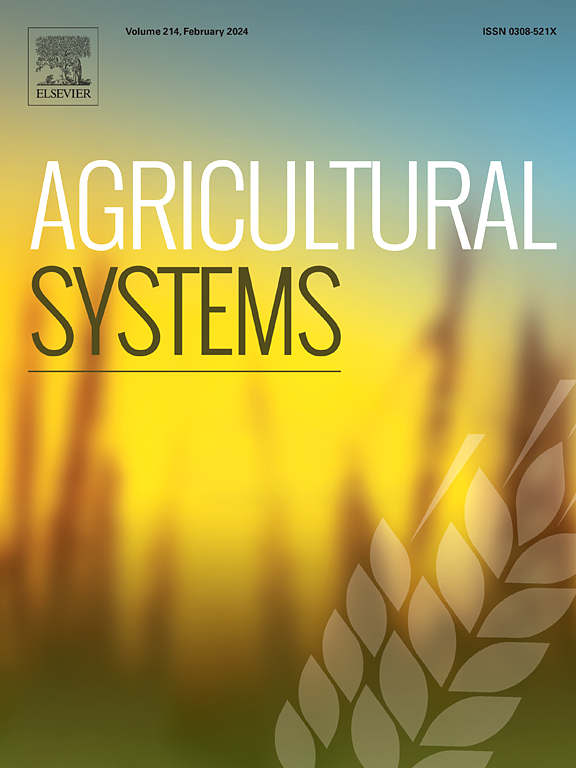Transition from chemical fertilizers to sustainable swards: What determines farmers' adoption decisions for clover and multi-species swards?
IF 6.1
1区 农林科学
Q1 AGRICULTURE, MULTIDISCIPLINARY
引用次数: 0
Abstract
Context
Farmers' transition from using chemical nitrogen (N) fertilizer to adopting sustainable alternatives like clover and multi-species swards can mitigate greenhouse gas emissions from agriculture, increase carbon sequestration, improve water quality, reduce dependence on volatile fertilizer prices and imports, and offer numerous other benefits. However, despite efforts to promote the uptake of clover and multi-species swards, adoption by farmers remains low.
Objective
This study addresses an important literature gap by exploring the socio-psychological factors influencing farmers' adoption decisions around clover and multi-species swards. Specifically, it investigates the determinants of both intentions to adopt and self-reported adoption levels. Unlike the majority of previous studies, adoption is analysed as a multi-stage process rather than a conventional binary decision, providing more nuanced insights into the complex process of adopting clover and multi-species swards.
Methods
A survey was conducted with 373 farmers who are part of the EU Farm Accountancy Data Network for Ireland. Focus group discussions helped with the design of the survey. A principal component analysis, based on polychoric correlations, was employed on Likert-scale statements capturing socio-psychological factors. Final components were then used as explanatory variables in separate ordered logistic regressions of intentions to adopt clover and multi-species swards, and in a multinomial logistic regression of self-reported adoption levels.
Results and conclusions
Findings highlight the significant role of farmers' perceptions in their decision-making processes. Results show that the perceived usefulness of clover and multi-species swards is a significant driver of intentions to adopt and self-reported adoption levels. Conversely, the perceived complexity of adoption is a significant barrier to farmers' intentions to adopt clover. In addition, farmers with more familiarity with clover are more likely to adopt it, and farmers who have already tested clover are more likely to adopt multi-species swards.
Significance
In response to the urgent need to reduce chemical N fertilizer usage in Europe and beyond, this study presents unique insights into the factors that drive and constrain the adoption of clover and multi-species swards. These findings provide valuable guidance for policy decisions, highlighting key factors that must be addressed to facilitate a widespread transition from chemical N fertilizers to clover and multi-species swards.

求助全文
约1分钟内获得全文
求助全文
来源期刊

Agricultural Systems
农林科学-农业综合
CiteScore
13.30
自引率
7.60%
发文量
174
审稿时长
30 days
期刊介绍:
Agricultural Systems is an international journal that deals with interactions - among the components of agricultural systems, among hierarchical levels of agricultural systems, between agricultural and other land use systems, and between agricultural systems and their natural, social and economic environments.
The scope includes the development and application of systems analysis methodologies in the following areas:
Systems approaches in the sustainable intensification of agriculture; pathways for sustainable intensification; crop-livestock integration; farm-level resource allocation; quantification of benefits and trade-offs at farm to landscape levels; integrative, participatory and dynamic modelling approaches for qualitative and quantitative assessments of agricultural systems and decision making;
The interactions between agricultural and non-agricultural landscapes; the multiple services of agricultural systems; food security and the environment;
Global change and adaptation science; transformational adaptations as driven by changes in climate, policy, values and attitudes influencing the design of farming systems;
Development and application of farming systems design tools and methods for impact, scenario and case study analysis; managing the complexities of dynamic agricultural systems; innovation systems and multi stakeholder arrangements that support or promote change and (or) inform policy decisions.
 求助内容:
求助内容: 应助结果提醒方式:
应助结果提醒方式:


